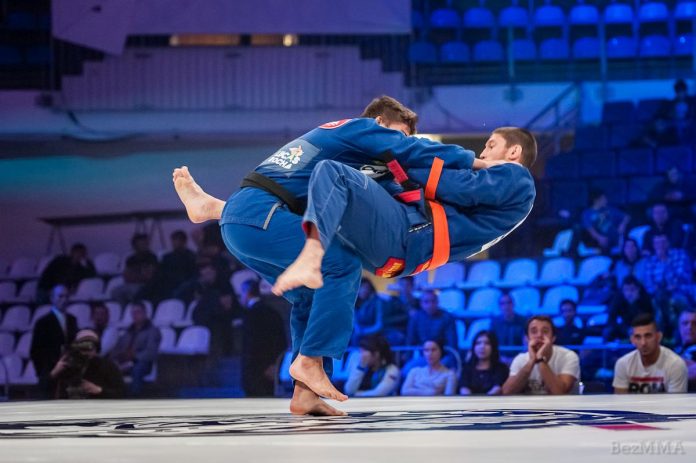
Pulling guard in BJJ is often seen as a coward’s move. I couldn’t disagree with that notion more. The BJJ Guard Pull is actually BJJ’s only original takedown. Yes, even though it lands you on your back. You still have a position of dominance and have taken the fight to the ground. That said, one way to start respecting the guard pull is to repeatedly get caught in it. The options that follow are plentiful for your opponent and extremely limited for yourself. Luckily, there are several ways of countering the pulling guard. In fact, you can actually counter any type of guard pull, as long as you react on time.
Back when I was a white and blue belt, the BJJ guard pull was my main go-to match starter. Coming from a Judo background, I was always comfortable on my feet., However, the notion of playing guard was always very attractive to me, so I wanted to learn the ways in which can get me there. As I discovered different guards, I found further options that allowed me to get into them straight from standing. And no, it is not a move that should be frowned upon. In fact, the fact that people complain about how “unfair” and “unattractive” it only proves how efficient the BJJ guard pull can be. To that extent, if you compete in BJJ. Particularly with the Gi, you simply have to know how to deal with people pulling guard. And your best bet to achieve it is counters.
The Unique Aspects Of The BJJ Guard Pull
What exactly is the BJJ Guard Pull? In short, it is a safe way of pulling an opponent to the ground, directly into your guard. The fact that you’re pulling someone down, rather than trying to throw them or take them down makes people see it as something lesser than a takedown. IN essence, ti is not. The only difference is, you land on your back. However, in BJJ, and particularly when it comes to the guard, this is precisely what you’re after.
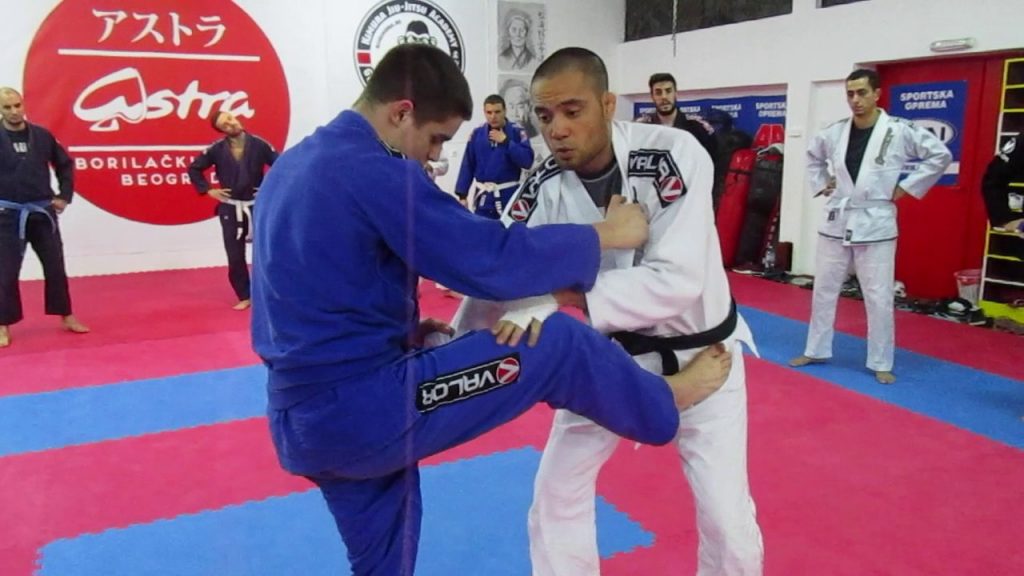
Apart from pulling the closed guard, you could also go for just about any other guard out there, While pulling an inverted guard is not a very smart or effective thing to do, other guards work perfectly well. Some examples of great BJJ Guard Pull options are the half guard and the butterfly guard. Moreover, instead of pulling you could even go and jump into guard if you desire so. And every one of these pulls can actually be prevented with timely counters. Now that is something we’ll be looking into today.
Counters Are Better Than Defense
When it comes to standing, it is best that you forget about defending. Trying to defend takedowns, throws, or even the Guard Pull, for that matter is not really effective. Instead, you need to be focusing on counters and timing them to perfection. Once you have this down, you’ll be unstoppable standing. Then you can go for some guard pulling of your own to annoy everybody.
In terms of countering you have to remember that timing is the absolute key here. That means that whenever you see/feel an opponent going for a BJJ Guard Pull, you need to be expecting a counter without overthinking. Luckily, defense always takes much less time than attack., In that sense, all you need to do is understand where the opponent is trying to get to, and how they’re going to go about it. That is the basic concept of countering guard pulls in BJJ.

A Few BJJ Guard Pull Centers For Any Occasion
On to the counters then. The best way to be ready for a kind of BJJ Guard Pull is to master a few yourself. We’ll look into several different ways of countering the guard pull in BJJ. moreover, we’ll explore different stages of the attack, and how you can prevent each of them separately. Just as a bonus, we’ll look into preventing the jump guard as well, since it can be really common, particularly at lower belt level.
Countering The Basic BJJ Guard Pull
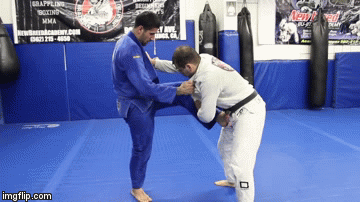
Late Counters
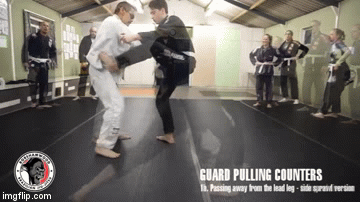
Jump Guard Counter
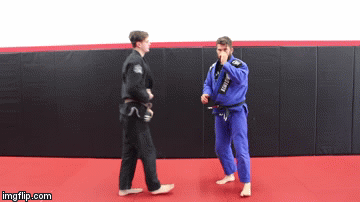
Closing Thoughts
There’s no need to fear and demonize the BJJ Guard Pull. IN fact, learn how to do it yourself, as it will definitely come in handy sometimes. However, when it comes to preventing it, there are several easy options. All you need to do is recognize what stage you’re in so that you can use the appropriate response. That way, you’ll never be pulled into someone’s guard against your will ever again!


![Darce Choke Encyclopedia – Origins, Mechanics and Variations [2025] BJJ, choke, Brabo, BJJ Darce Choke, D'arce Choke, Darce BJJ Choke](https://bjj-world.com/wp-content/uploads/2017/11/JungPoirierLeeYahoo-218x150.jpg)









![Frame Lasso Robson Moura DVD Review [2025] Frame Lasso Robson Moura DVD Review](https://bjj-world.com/wp-content/uploads/2025/04/frame-lasso-robson-moura-dvd-review-218x150.png)

![Leg Locks Finishes Helena Crevar DVD Review [2025] Leg Locks Finishes Helena Crevar DVD Review](https://bjj-world.com/wp-content/uploads/2025/04/leg-locks-finishes-helena-crevar-dvd-review-218x150.png)


![Leg Entanglement System: X Lock Owen Jones DVD Review [2025] Leg Entanglement System: X Lock Owen Jones DVD Review](https://bjj-world.com/wp-content/uploads/2025/04/leg-entanglement-system-x-lock-owen-jones-dvd-review-218x150.png)
![Feet Finder Foot Sweeps Christian Ozbek DVD Review [2024] Feet Finder Foot Sweeps Christian Ozbek DVD Review](https://bjj-world.com/wp-content/uploads/2024/09/feet-finder-foot-sweeps-christian-ozbek-dvd-review-324x235.png)
![Countering with Crab Ride Anthony Budion DVD Review [2025] Countering with Crab Ride Anthony Budion DVD Review](https://bjj-world.com/wp-content/uploads/2025/03/countering-with-crab-ride-anthony-budion-dvd-review-100x70.png)
![Best Marcelo Garcia Techniques by Team Marcelo Garcia DVD Review [2025] Best Marcelo Garcia Techniques by Team Marcelo Garcia DVD Review](https://bjj-world.com/wp-content/uploads/2025/02/best-marcelo-garcia-techniques-dvd-review-100x70.png)




![6 Most Essential Skills Base Top Dima Murovanni DVD Review [2025] 6 Most Essential Skills Base Top Dima Murovanni DVD Review](https://bjj-world.com/wp-content/uploads/2025/04/essential-skills-base-top-dima-murovanni-dvd-review-100x70.png)

![Dubious De La Riva Dominique Bell DVD Review [2024] Dubious De La Riva Dominique Bell DVD Review](https://bjj-world.com/wp-content/uploads/2024/10/dubious-de-la-riva-dominique-bell-dvd-review-100x70.png)
![Grappling Takedown Dominance Brandon Ruiz DVD Review [2025] Grappling Takedown Dominance Brandon Ruiz DVD Review](https://bjj-world.com/wp-content/uploads/2025/01/grappling-takedown-dominance-brandon-ruiz-dvd-review-100x70.png)
![Dynamic De La Riva Guard Otavio Sousa DVD Review [2025] Dynamic De La Riva Guard Otavio Sousa DVD Review](https://bjj-world.com/wp-content/uploads/2025/02/dynamic-de-la-riva-guard-otavio-sousa-dvd-review-100x70.png)



![The Stack Pass Andre Galvao DVD Review [2025] The Stack Pass Andre Galvao DVD Review](https://bjj-world.com/wp-content/uploads/2025/01/the-stack-pass-andre-galvao-dvd-review-100x70.png)
![The Bear Trap Nicolas Renier DVD Review [2025] The Bear Trap Nicolas Renier DVD Review](https://bjj-world.com/wp-content/uploads/2025/01/the-bear-trap-nicolas-renier-dvd-review-100x70.png)




![Reverse Arm Bar System Andrew Kerfoot DVD Review [2024] Reverse Arm Bar System Andrew Kerfoot DVD Review](https://bjj-world.com/wp-content/uploads/2024/10/reverse-arm-bar-system-andrew-kerfoot-dvd-review-100x70.png)
![Trip Throw Dilemma Michael Pixley and Heath Pedigo DVD Review [2024] Trip Throw Dilemma Michael Pixley and Heath Pedigo DVD Review](https://bjj-world.com/wp-content/uploads/2024/10/trip-throw-dilemma-michael-pixley-dvd-review-100x70.png)
![Highlight Hip Throws Christian Ozbek DVD Review [2025] Highlight Hip Throws Christian Ozbek DVD Review](https://bjj-world.com/wp-content/uploads/2025/01/highlight-hip-throws-christian-ozbek-dvd-review-100x70.png)
![Cross Ashi Garami Firas Zahabi DVD Review [2025] Cross Ashi Garami Firas Zahabi DVD Review](https://bjj-world.com/wp-content/uploads/2025/04/cross-ashi-garami-firas-zahabi-dvd-review-100x70.png)




